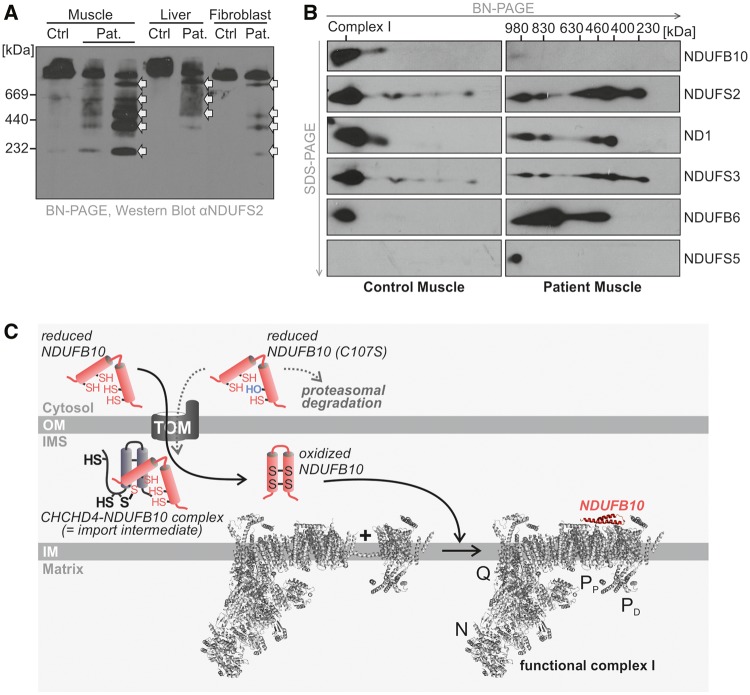Figure 9.
Assembly of complex I is impaired in cells harboring NDUFB10C107S. (A) The assembly of complex I is evaluated by separation on a native gel followed by Western blotting and probing with an antibody against NDUFS2, a subunit which is present in the early stage of assembly. The patient (Pat.) muscle has subassembly complexes present at 230 kDa, 400 kDa, 460 kDa, 630 kDa, and 830 kDa before the fully assembled complex (white arrows). These are less evident in liver and fibroblasts, but still present in the patient, and not in controls. (B) Two-dimensional gel analysis with blue native PAGE in the first dimension followed by SDS-PAGE in the second dimension of muscle tissue of the patient. After Western blotting, the membrane was probed with antibodies against subunits known to be present in various subcomplexes. Subcomplexes at 230 kDa, 400 kDa, 460 kDa, 830 kDa and the mature complex at 980 kDa are visible in the patient, with only traces visible in control sample. NDUFS2 and NDUFS3 are identified from the first subassembly, whereas ND1 is present from the 400 kDa subocmplex, NDUFB6 from the 460 kDa and NDUFS5 from the fully assembled complex only. NDUFB10 is present from the 830 kDa subcomplex on. (C) Model for the role of NDUFB10 in the assembly of complex I of the respiratory chain. Structure of complex I modified from (47) (pdb 4UQ8).

